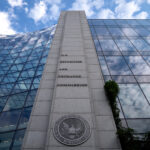Because of the threshold amount, many acts of domestic terrorism may not be certified. Even under the TRIA, insurers may exclude coverage for loss resulting from ‘non-certified’ acts of terrorism.
After the smoke cleared and the tragedy was realized, the recent events in Austin, Texas, in which a frustrated taxpayer crashed a plane into a building where the IRS maintained offices, injuring people, damaging property, and ending his own life, may have sent some businesses and property owners scrambling to determine when or how acts of domestic terrorism are covered.
Following 9/11, terrorism exclusions proliferated in myriad forms. The Terrorism Risk Insurance Act was signed into law in 2002 to provide a “backstop,” requiring that insurers provide coverage, essentially the same as that for other risks, for certain certified acts of terrorism, and providing for federal participation in losses over a certain dollar amount.
The TRIA, as originally passed, was limited to foreign acts, and did not encompass domestic terrorism. The act was revised in 2007, and now encompasses domestic terrorism.
While insurers must offer the coverage, and specify the premium associated with it, insureds may decline it and frequently do, as the risk may seem remote and the coverage is limited. In addition, since the coverage for terrorism is similar to coverage provided for other risks, other policy exclusions still apply.
The TRIA was amended by the Terrorism Risk Insurance Extension Act of 2005 and the Terrorism Risk Insurance Program Reauthorization Act of 2007. As amended, an “act or terrorism” is an act, certified by the Secretary of State, (i) to be an act of terrorism; (ii) to be a violent act that is dangerous to human life, property, or infrastructure; and (iii) to have resulted in damage within the United States or on a U.S. flag vessel, air carrier, or mission, and (iv) committed by an individual or individuals as part of an effort to coerce the civilian population of the United States or to influence policy or affect the conduct of the U.S. government by coercion.
The act further provides that an act of terrorism may not be certified if all property and casualty losses from the act do not exceed $5 million, and sets a cap above which insurers are not liable.
An insurer must make coverage for such losses available, and must notify the insured of the premium attributed to the coverage. The coverage may not differ materially from the terms, amounts, and limitations of coverage for other perils. If an insurer does not cover certain risks – such as nuclear, biological, or chemical hazard, it need not cover terrorist acts by these methods.
If the proffered TRIA coverage is rejected, the insurer may make available alternative coverage or include alternative exclusions, subject to state laws.
Exclusions not Standard
Because of the threshold amount, many acts of domestic terrorism may not be certified. Even under the TRIA, insurers may exclude coverage for loss resulting from “non-certified” acts of terrorism.
Where TRIA coverage is declined, the policies may exclude even certified acts of terrorism. Typically, these exclusions include anti-concurrent causation language, specifying that any loss or damage is excluded “regardless of any other cause or event that contributes concurrently or in any sequence to the loss.”
This can present a problem if the act of terrorism results in an otherwise covered loss. The most common example is ensuing fire – such as that following the Austin crash. Some states prohibit exclusions that do not include fire coverage, where Standard Fire Coverage is required. Accordingly, some insurers offer exclusions that include an exception for ensuing fire.
In addition, insurers may still exclude non-certified terrorism losses. Terrorism exclusions vary, especially among surplus lines policies, but typically involve a component of coercion for political or ideological purposes.
As terrorism exclusions are not standard, and may change from company to company, or state to state, they should be reviewed carefully. Special attention should be paid to the difference between the exclusions for certified and non-certified acts of terrorism and to whether the anti-concurrent causation language will preclude coverage for otherwise insured contributing or ensuing losses.
In addition, even though terrorism coverage is afforded, it may not extend to nuclear, biological or chemical attacks, as these risks are commonly excluded by exclusions for pollution and nuclear hazards and the TRIA coverage need only be the same as what is typically offered.
There are also “limited” exclusions, that apply only to losses caused by terrorism effected through radioactive materials or pathogenic or poisonous biological or chemical materials. And, many exclusions still include an exception for direct loss by ensuing fire, but may not extend the exclusion to business income losses.
Sometimes Coverage Is Required
In addition to direct claims for loss, terrorism coverage may also be impacted in business transactions, such as where a lease or mortgage requires insurance. An insured that is subject to a requirement for maintaining insurance needs to determine whether terrorism coverage is required – before declining coverage.
In TAG 280, LLC v. ConMet 380, Inc., there was a dispute over whether a tenant breached a lease by obtaining a policy with a terrorism exclusion. The concern was that terrorists could use violence or intimidation to affect political conduct through the otherwise insured perils, such as fire, explosion, or collision with an aircraft, and the losses would then be uninsured. The lease required coverage consistent with the New York Standard Fire Insurance Policy and Extended Coverage Endorsement. The court agreed that the lease required coverage for the perils without the terrorism exclusion.
These disputes will typically turn on the description of coverage required, but do raise the issue of whether, in our brave new world, “all-risk” will be commonly construed to include coverage for terrorism, and should be borne in mind before the coverage is declined. See, e.g., Omni Berkshire Corp. v. Wells Fargo Bank, 307 F. Supp. 2d 534 (S.D. N.Y. 2004) (finding no requirement that Omni maintain insurance in the same form as existed prior to 9/11 – i.e., with no terrorism exclusion).
Random Attacks
While terrorism strikes fear in the heart of insureds and insurers, it is also important to remember that random attacks, or targeted attacks based on a motive that is not political or ideological, will not implicate the terrorism coverage issues, and will be analyzed under the general coverage provisions – and where pollution, chemical and nuclear hazards are not involved – will frequently be covered.
Topics Catastrophe Natural Disasters USA Carriers Profit Loss Chemicals
Was this article valuable?
Here are more articles you may enjoy.


 White House Seeks to Bring Financial Regulators Under Its Sway
White House Seeks to Bring Financial Regulators Under Its Sway  USI Says Lockton, Former Team Leader Poached Workers, Harmed Client Relations
USI Says Lockton, Former Team Leader Poached Workers, Harmed Client Relations  More Floridians Moving Out Due to Housing, Insurance Costs, Cotality Report Says
More Floridians Moving Out Due to Housing, Insurance Costs, Cotality Report Says  Don’t Forget Tariff Impacts on Workers’ Compensation: Berkley
Don’t Forget Tariff Impacts on Workers’ Compensation: Berkley 


